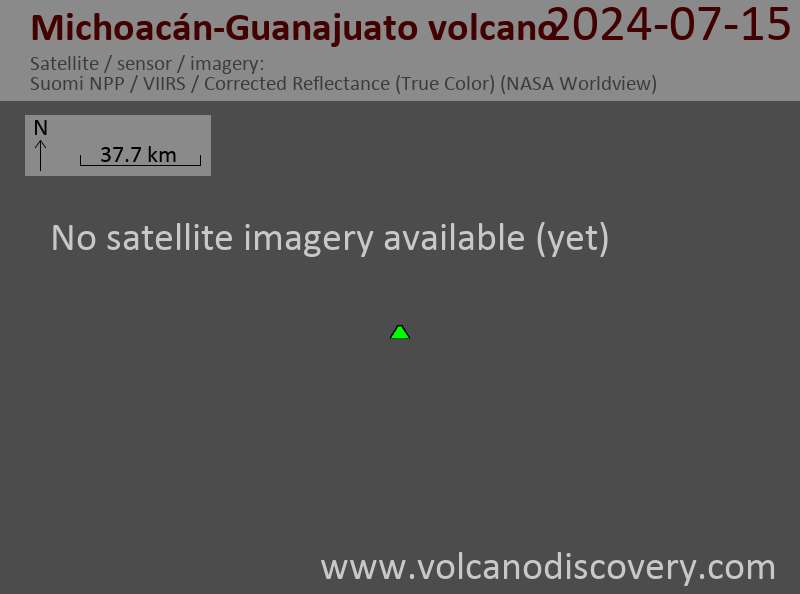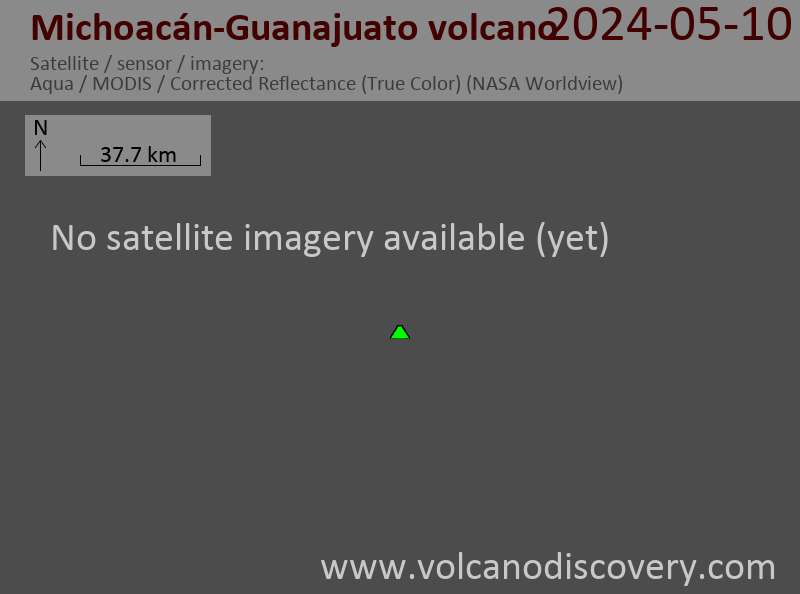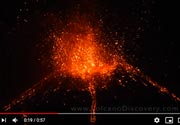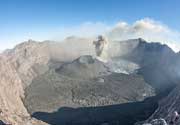Michoacán-Guanajuato Volcano
Updated: Apr 28, 2024 01:25 GMT -
Cinder cones 3860 m / 12,664 ft
West-Central Mexico, 19.49°N / -102.25°W
Current status: normal or dormant (1 out of 5)
West-Central Mexico, 19.49°N / -102.25°W
Current status: normal or dormant (1 out of 5)
Michoacán-Guanajuato volcanic field is mostly known for Paricutín, one of the few volcanoes whose birth has been witnessed by man. It literally grew over a corn-field during 1943-52!
The widespread Michoacán-Guanajuato volcanic field contains over 1400 vents, including the historically active cinder cones of Parícutin and Jorullo, covering a 200 x 250 km wide area of Michoacán and Guanajuato states in west-central México. Cinder cones are the predominant volcanic form, but small shield volcanoes, lava domes, maars and tuff rings (many in the Valle de Santiago area), and coneless lava flows are also present.
[smaller] [larger]
Michoacán-Guanajuato volcano eruptions: 1759-74 (Jorullo), 1943-52 (Paricutín)
radiocarbon- or archeology dated:
1050 ± 50 years (?, Valle de Santiago), 1880 BC ± 150 years (Cerro el Jabali), ca. 2050 BC (Valle de Santiago, La Alberca), 2750 BC ± 200 years (Cerro el Metate), 6480 BC ± 300 years (Cerro la Taza), 7350 BC ± 300 years (Hoyo el Huanillo)
Latest nearby earthquakes
| Time | Mag. / Depth | Distance / Location | |||
Background
The shield volcanoes of the Michoacán-Guanajuato volcanic field are mostly Pleistocene in age, and have morphologies similar to small Icelandic-type shield volcanoes, although the Michoacán-Guanajuato shields have higher slope angles and smaller basal diameters. Jorullo, which was constructed in the 18th century, and Parícutin are the two best known of the roughly 1000 small volcanic centers scattered throughout the volcanic field.Eruptions of Michoacán-Guanajuato volcano
1943-52 Paricutin eruption
Paricutin was formed as a new volcano on 20 February 1943 in Mexico. A fissure opened on a corn field on the lands of Rancho Tepacua. A new fissure opened and started to erupt lava, forming a new cinder cone and a vast lava flow that destroyed Paricutin village, but spared its church. ...more info
Paricutin was formed as a new volcano on 20 February 1943 in Mexico. A fissure opened on a corn field on the lands of Rancho Tepacua. A new fissure opened and started to erupt lava, forming a new cinder cone and a vast lava flow that destroyed Paricutin village, but spared its church. ...more info
1759-1774 eruption (Volcan El Jorullo)
A violent eruption started in June 1959 from a new fissure and lasted until 1774, building the 350 m tall Jorullo cone and several smaller new cones. ...more info
A violent eruption started in June 1959 from a new fissure and lasted until 1774, building the 350 m tall Jorullo cone and several smaller new cones. ...more info
















